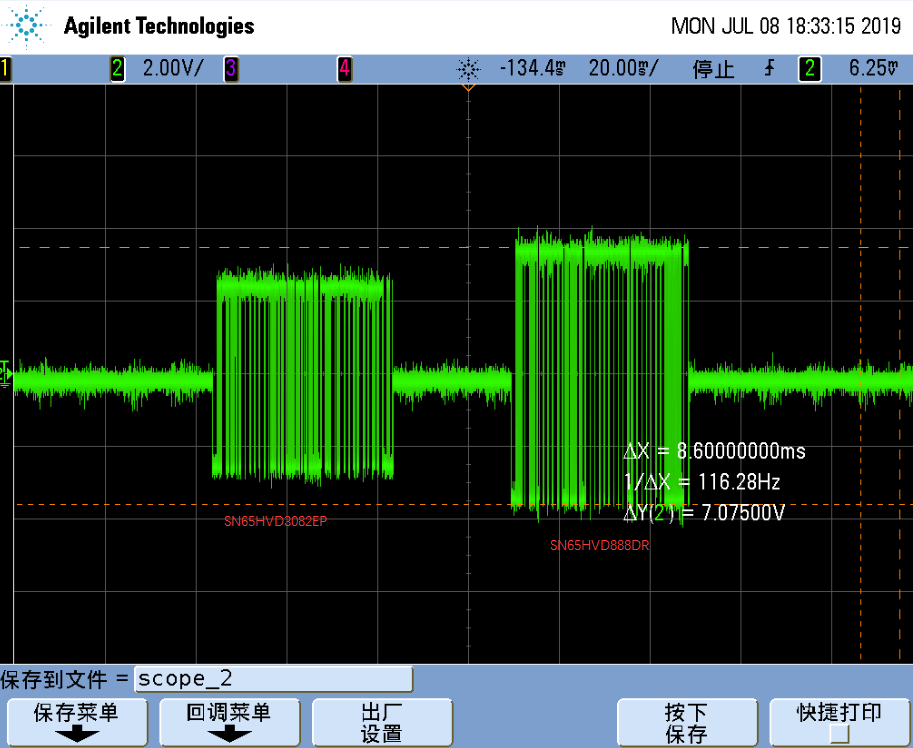Hi team,
My customer is using SN65HVD888 as slave and SN65HVD3082 as master. Point-point test, cable length is 50CM, VCC = 5V; The AB differential signal for both devices is captured as below: the signal amplitude from 3082 is different from the 888. I'd like to understand the reason why the amplitude is different? And what is the typical parameter the determines the amplitude? Thanks.
Regards,
Patrick


